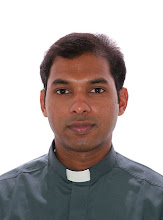 The dance in India is an age-old tradition. It covers a wide range of dances, from the ancient classical to modern styles. This vast sub continent has given birth to varied forms of dancing, each shaped by the influences of a particular period and environment. All Indian dances portray some expression of life and almost every dance posture has a specific meaning. Different sates in India have different and colorful folk dances.
The dance in India is an age-old tradition. It covers a wide range of dances, from the ancient classical to modern styles. This vast sub continent has given birth to varied forms of dancing, each shaped by the influences of a particular period and environment. All Indian dances portray some expression of life and almost every dance posture has a specific meaning. Different sates in India have different and colorful folk dances. India offers man forms of classical dances to the world of dance. In which each dance can be traced to different parts of the country. The criteria of classical style are depending on the guidelines laid down in Natyashastra written by Bharata Muni (400 BC). It is the first book, which gives the details about the technique and forms of dance. Abhinaya Darpanam was another book on dance. It gives the fundamental techniques. According to those instructions, in India, it is considered there are eight classical dances. Bharatanatyam, Odissi, Kuchipudi, Manipuri, Mohiniaattam, Sattriya, Kathak, Kathakali.
But here in this article I would like to highlight two main classical dances that originated typically from the state of Kerala that is Kathakali and Mohiniaattam.
Kathakali:-
 This dance form shows a story play or a dance drama. And it has a unique combination of literature, music, painting, acting and dance. The themes of Kathakali dances are very religious in nature and is typically taken from the epics, Mahabharata and Ramayana. It is mostly performed by men. Costumes and painting on the face are most distinctive characteristics of Kathakali. It generally started at dusk and go through out the night.
This dance form shows a story play or a dance drama. And it has a unique combination of literature, music, painting, acting and dance. The themes of Kathakali dances are very religious in nature and is typically taken from the epics, Mahabharata and Ramayana. It is mostly performed by men. Costumes and painting on the face are most distinctive characteristics of Kathakali. It generally started at dusk and go through out the night.Mohiniaattam:- This dance is generally performed by women and has graceful and
 bobbing movements. The dancers wear an off-white color saree with gold border; hairs are gathered in a bun in one side with golden jewelry. Mohiniaattam dance is a beautiful dance form of feminine styles to flow body movements. The theme of Mohiniaattam is mostly ‘sringara’ or love. These subjects are executed with subtle gestures, rhythmic footwork and lilting music.
bobbing movements. The dancers wear an off-white color saree with gold border; hairs are gathered in a bun in one side with golden jewelry. Mohiniaattam dance is a beautiful dance form of feminine styles to flow body movements. The theme of Mohiniaattam is mostly ‘sringara’ or love. These subjects are executed with subtle gestures, rhythmic footwork and lilting music.

No comments:
Post a Comment